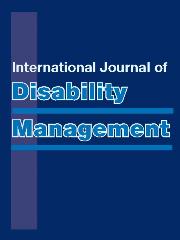Article contents
Is Employer-Based Disability Management Necessary in a Social-Democratic Welfare State like Sweden?
Published online by Cambridge University Press: 04 November 2016
Abstract
In this article the need for employer-based disability management (DM) in a modern welfare state is discussed. The article is not a traditional research article, but rather a conceptual article with a purpose to discuss and reflect over existing perspectives, and argue for a stronger focus on welfare state issues in DM research. Focus is set on Sweden and it is concluded that much of the thought behind DM is indeed built into the comprehensive welfare system. In addition to the employer's responsibilities regarding ill-health prevention, the Acts and regulations of the governmental social insurance agency's responsibilities regarding return to work are comprehensive. As can be seen, however, this is no guarantee that the established process will work in practice. In too many cases, the system in Sweden is suffering from organisational and case-level related problems. Against this background, it is suggested that current responsibilities put on the social insurance agency can be removed and instead be put on the employer. The answer to the main question stated in this article (i.e., ‘Is employer-based DM necessary in a social-democratic welfare state like Sweden?’) is obviously yes.
- Type
- Articles
- Information
- Copyright
- Copyright © The Author(s) 2016
References
- 1
- Cited by


